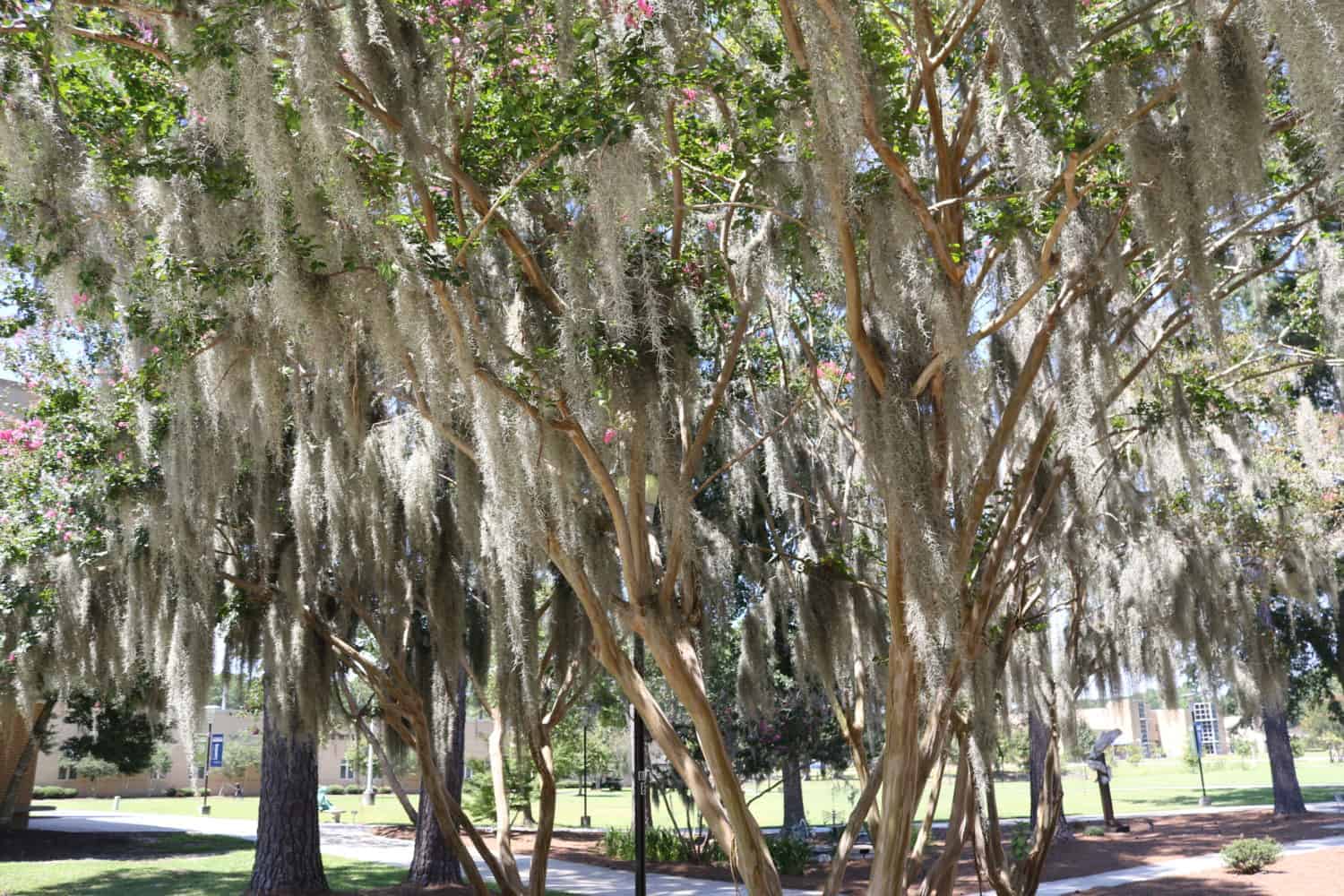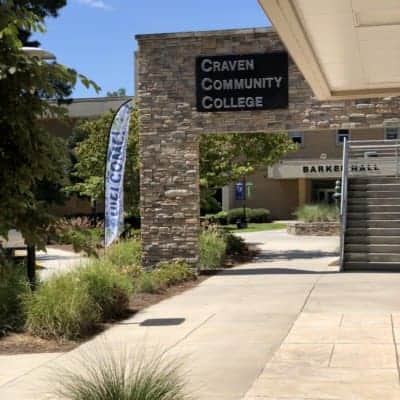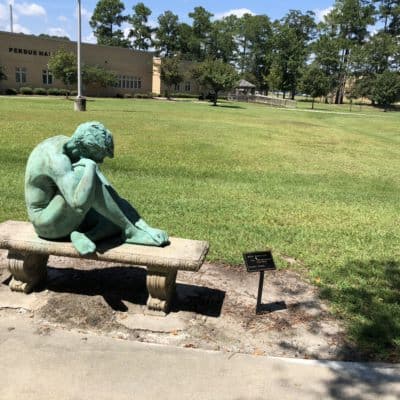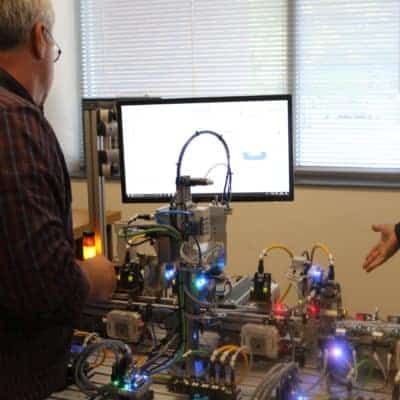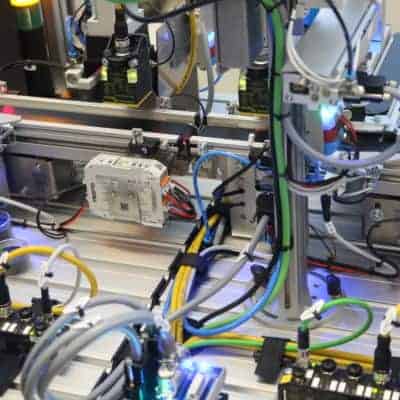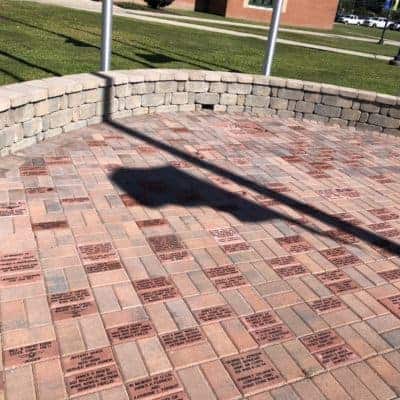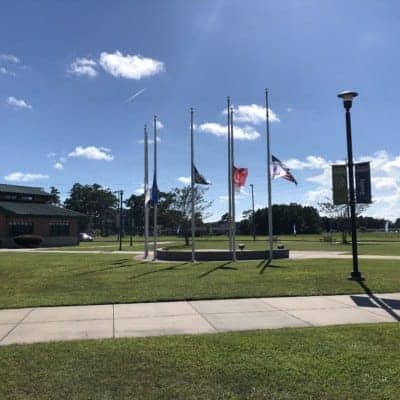If there’s one word that Craven Community College President Ray Staats would choose to describe the college’s work in the area, it would be community. Around the campus — along with Spanish moss and a collection of fine art — are posters that read “Learn Local.”
.@cravencc has incredible artwork scattered about campus, donated by board member Dr. Congleton. #Awake58 @Awake58NC @EducationNC pic.twitter.com/v5ZHinIjNo
— Liz Bell (@llizabell) August 28, 2018
“Very little is theoretical,” Staats said. He recently had a landscaper come to his house and tell him he can no longer operate his business due to having to lay off three employees who could not pass drug tests.
Staats’s immediate thought was, “Oh, I need to have a workforce development program here for that discipline,” he said.
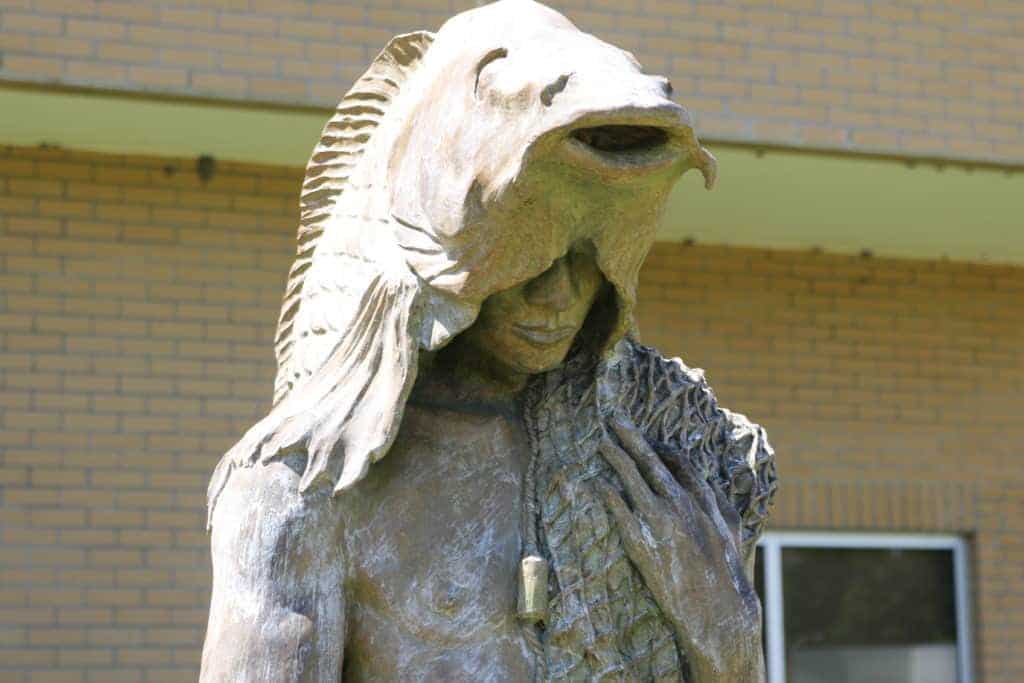

The night before EdNC visited Craven CC, Staats had attended a Craven County Community Foundation event where grants were awarded to over 30 nonprofits. Staats heard Craven Community College mentioned in over half of the organizations’ acceptance speeches. The local firefighters celebrated the college’s training. A religious organization that cares for homeless individuals said its participants become job-ready thanks to the college’s programs. And an organization that helps sexual assault survivors mentioned enrolling individuals in the college as part of getting them back on their feet.
Craig Ramey, Craven CC’s director of marketing and communications, said the nonprofit community in New Bern is uniquely robust. “We’re often seen as the conduits,” Ramey said.
To be a connector for organizations and people, the college stays in touch with the pulse of the region’s industry. Ramey said Craven CC’s administration regularly meets with local business owners and industrial partners. Many of the college’s administrators are on local boards as well.
“It’s very common for people to come to us and say, ‘Have you ever thought of running this class or that class?’ If we have enough of that, then we will run that class,” Ramey said.
Three new initiatives reflect that constant conversation and the desire to fill community needs.
This spring, Craven CC will open a new workforce development space called the Volt Center in downtown New Bern. Staats said the program will serve students who can not travel to its two campuses, the main one or the Havelock campus near the Marine Corps Cherry Point base.
“Near, we’ve got a plentiful supply of potential students who have transportation issues, so we’re gonna come to them,” Staats said.
The programs were developed based on what employers have said they need, Staats said.
“They’re all going to be entry-level workforce development programs or what I call skill trades: construction, plumbing, HVAC, small engine repair, carpentry … all the things you would consider folks that you would hire to do a variety of work that right now is in very high demand and very low supply.”
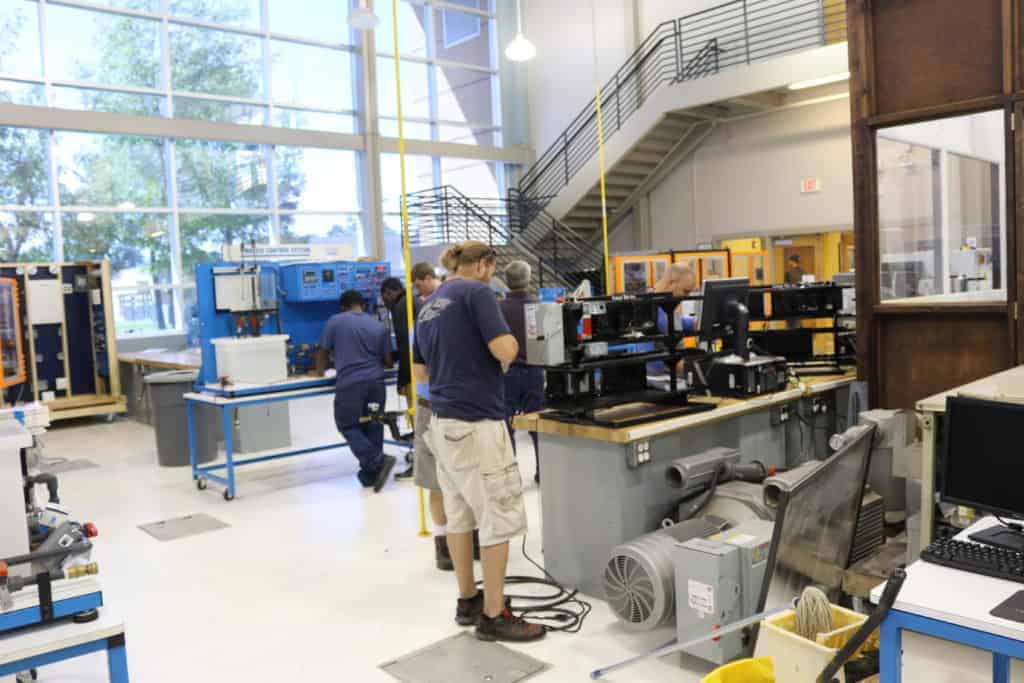

The school also has a brand new mechatronics program that came from industrial partners sharing needs with the college.
The school has the newest equipment available, called a “trainer,” which has different automation pieces that students can learn to program. It’s a small version of the larger machinery found at manufacturing plants.
“This gives them the opportunity to look at what it is that they’re going to be maintaining and repairing,” said Mike Keirn, the lead faculty member of the new mechatronics program. Keirn said the college worked with a local high school and its CTE (career and technical education) director to create a smooth pathway for high schoolers interested in mechatronics.
Probably Craven CC’s biggest community partnership takes the form of its Havelock campus, about 30 minutes away from the main campus, that sits right beside the Marine Corps Cherry Point base.
“Our whole function is to offer these marines and their dependents an opportunity to obtain their postsecondary education whether it’s an associate’s in art, an associate’s in science, at a very reduced cost, so it doesn’t use up all their TA, their tuition assistance,” said Walter Calabrese, the dean of the secondary campus.
In addition to helping veterans transition to the workforce, the Havelock campus also serves technical students who have access to base equipment during courses and often find work opportunities on the base afterwards.
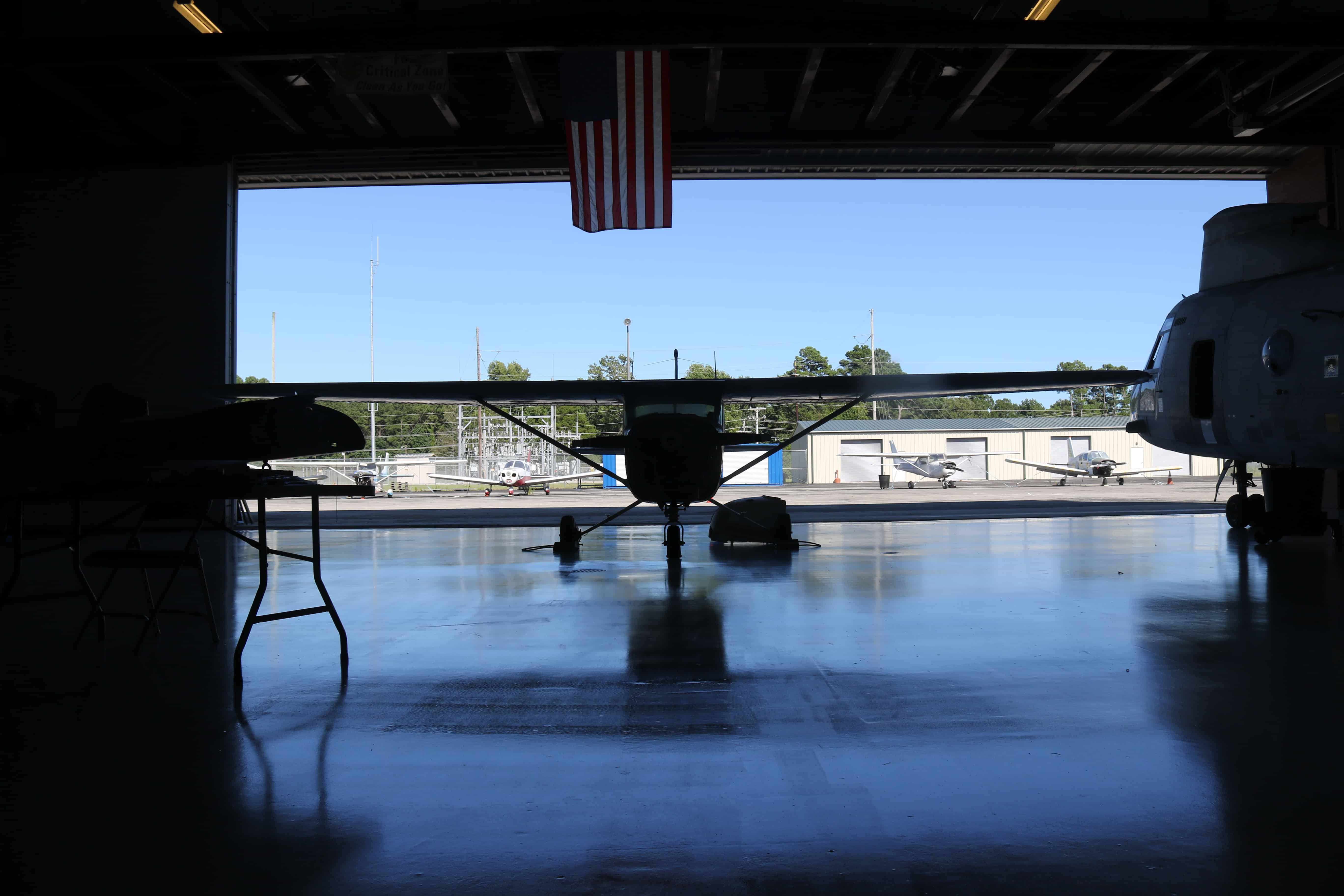

This year, Staats said a new degree program called industrial systems technology was started to equip individuals with the skills to work on the latest generation of military fighter plane: the F35B.
“The number of aircraft out there is going to explosively grow, and they need specialized mechanics, welders, sheet metal workers, and all sorts of avionics folks to maintain those aircraft,” Staats said. Between 2022 and 2025, Staats said the aircraft will start to be used by the base.
Above all, Staats said he wants programs to reflect the wide variety of needs that the wide variety of students come to Craven CC with.
“You get students that choose us as their first choice because they want to stay home,” he said. “You get students who come to us because they felt like there was nowhere to go, and we provided a home for them … You get the young ones, you get the middle-aged people, you get folks that are changing careers, you get mothers whose children have left the nest and who want to enter the workforce for the first time after being out for 20, 25 years, you get the fellow that worked in manufacturing for 20 or 25 years and lost his job due to a trade issue and now has to completely start again.”
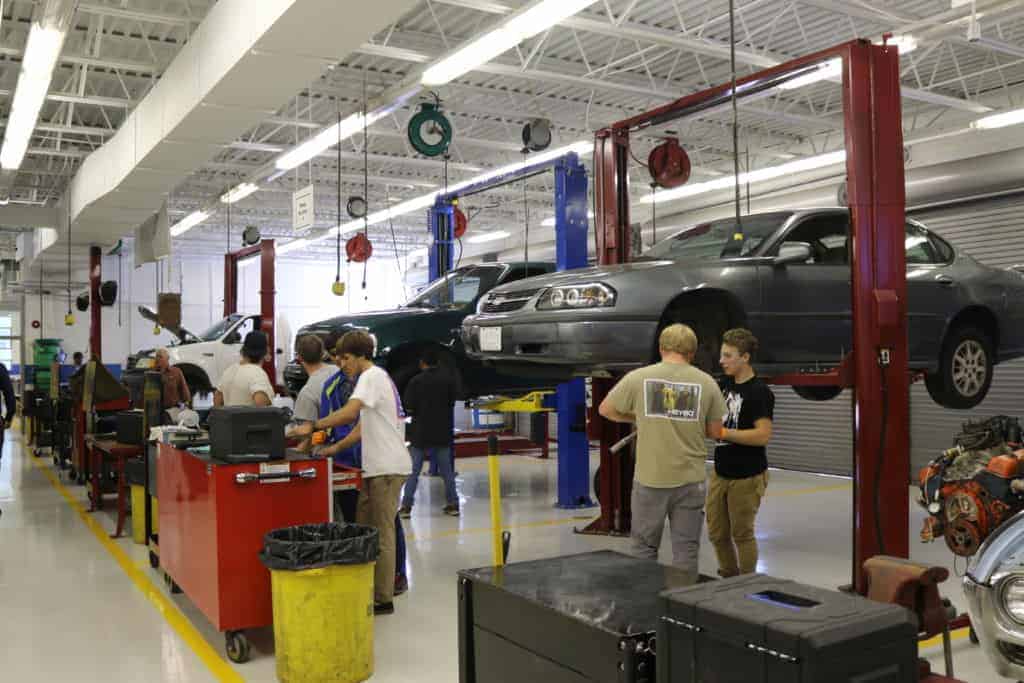

That mix — having different people with different backgrounds and goals learning together — is a strength, Staats said.
“It’s very common to have a high school valedictorian sitting in a class with a student who joined us some years earlier as a fourth grade reader and we brought that student up to college-ready standards, and now they’re in a curriculum class side-by-side with somebody that started with us ready, from the top of their class. And they proceed together.”
